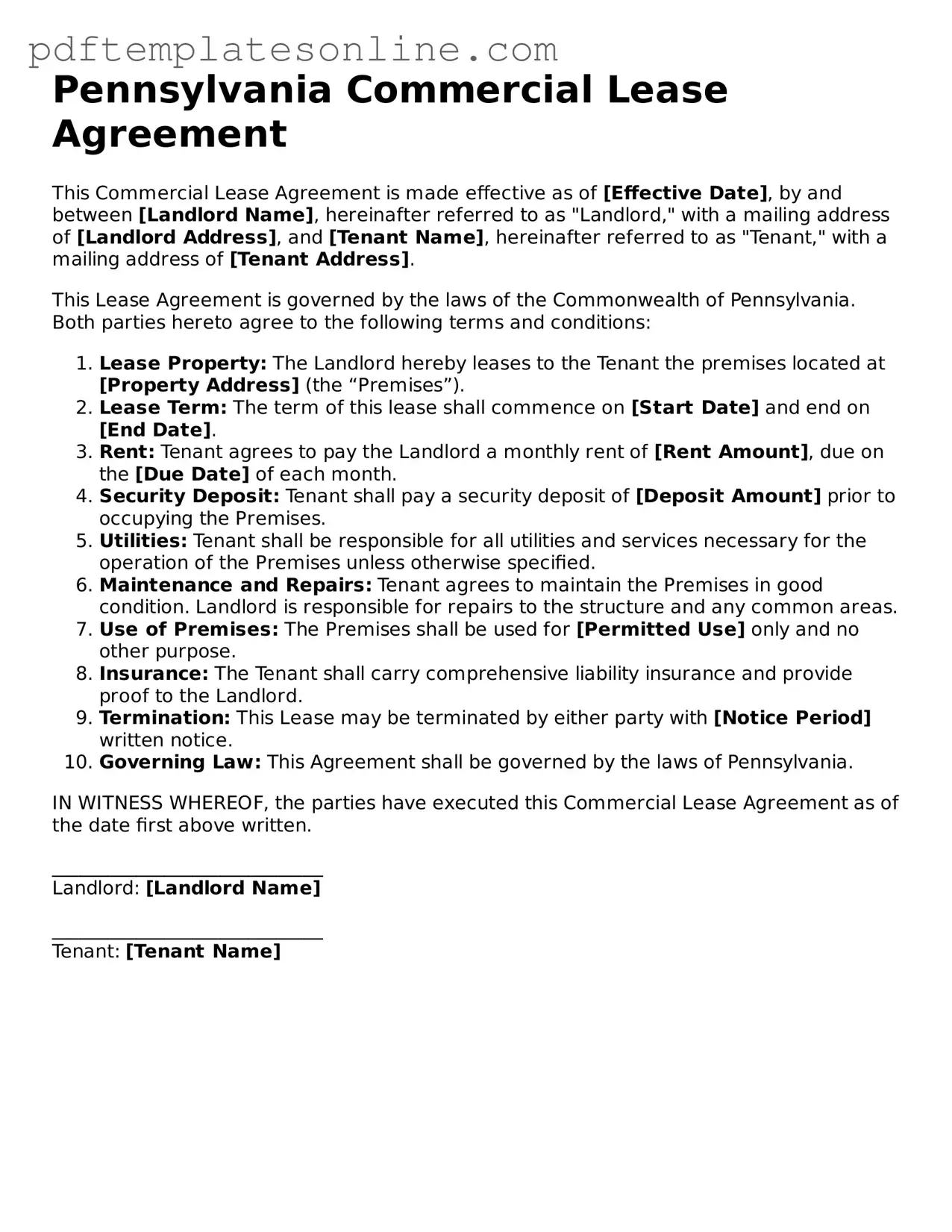Filling out a Pennsylvania Commercial Lease Agreement can be a daunting task. Mistakes made during this process can lead to misunderstandings and potential legal issues down the line. One common error is failing to specify the exact terms of the lease, including the duration. Without clear start and end dates, both landlords and tenants may find themselves in disputes regarding lease termination or renewal.
Another frequent mistake is neglecting to detail the rent payment structure. It is essential to include not just the amount of rent but also the due date and acceptable payment methods. If this information is vague or missing, it could result in late payments or even eviction proceedings. Clarity in financial obligations helps maintain a healthy landlord-tenant relationship.
People often overlook the importance of defining maintenance responsibilities. In many cases, the lease should clearly outline who is responsible for repairs and upkeep of the property. When these responsibilities are not explicitly stated, disagreements may arise, leading to frustration and potential legal action.
Additionally, some individuals fail to read the fine print regarding additional costs. Commercial leases may include clauses about property taxes, insurance, and maintenance fees. If these costs are not addressed upfront, tenants may be blindsided by unexpected expenses, which can strain their budget and business operations.
Lastly, many people do not seek legal advice before signing the lease. While it may seem like an unnecessary expense, consulting with a legal expert can provide valuable insights. A professional can help identify potential pitfalls in the agreement and ensure that the lease aligns with the tenant's business needs and legal rights.
